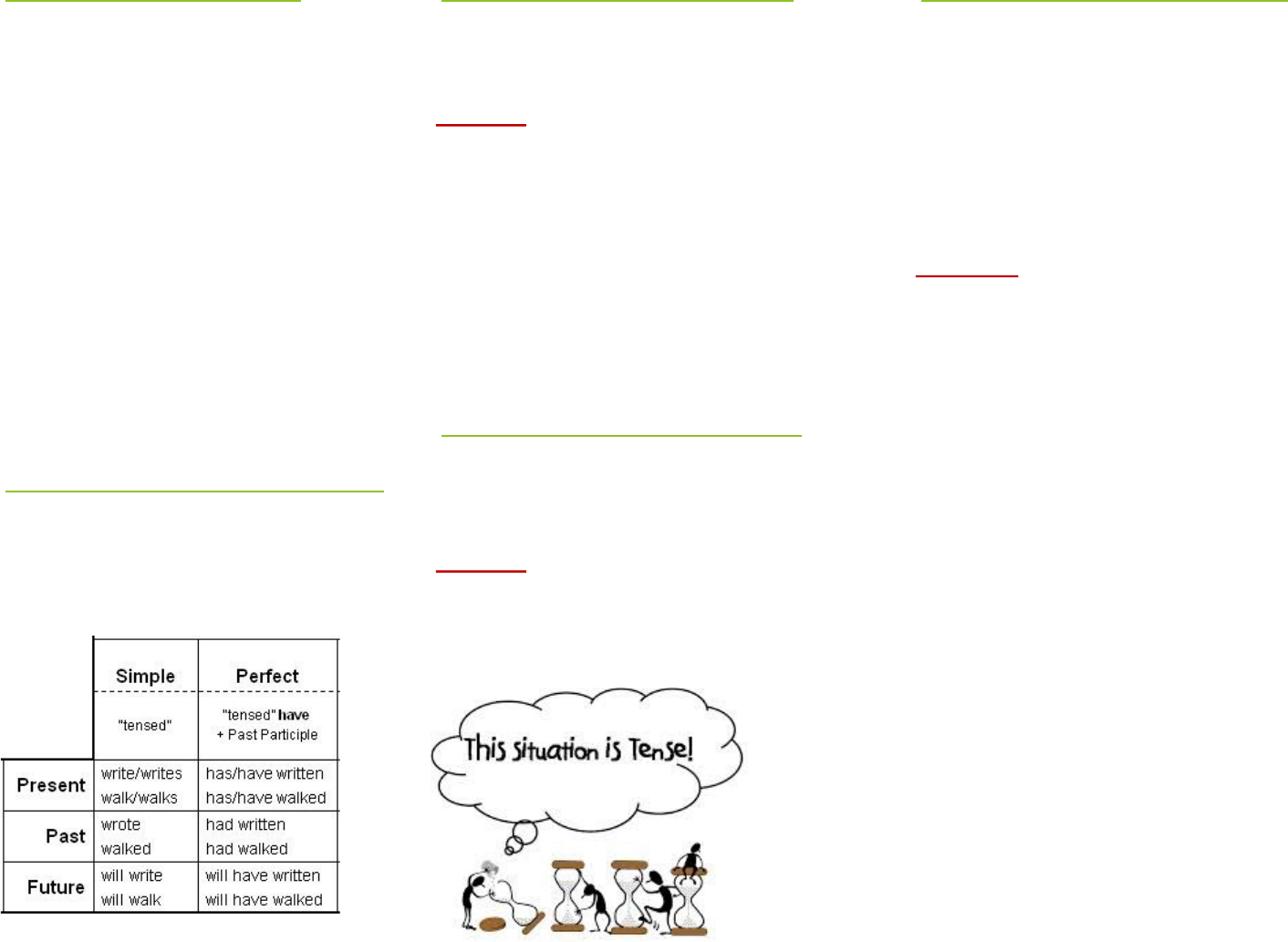
The results section usually requires
the past tense to detail the results ob-
tained.
Example:
Overall, more than 70% of the granite
collected were non-radioactive.
NOTE: Present tense may be used in
the key/legend for figures, tables, and
graphs in the results section.
Examples:
Figure 1 shows how (x-axis) effects (y
-axis).
Table 1 shows the average speed of
a monarch butterfly in flight over a
length of 10 meters.
Results
VERB TENSE
IN SCIENTIFIC
WRITING
Present tense is used in the discussion
section to explain the significance/
implications of the results/findings.
Example:
The removal of vegetation for agricul-
tural purposes appears to negatively
affect the water quality of streams.
NOTE: The past tense may be used to
summarize findings, WITH present
tense to interpret results.
Example:
As the number of newly hatched sea
turtles present on the beach appeared
to correspond to high and low tides, it is
possible that the patterns observed
may also be the result of a defense
Discussion
For more information about scientific writing,
visit the Writing Center. To make an appoint-
ment, go to berks.mywconline.com

Verb tenses present a relationship be-
tween the present moment (now),
and, another moment or period in time
(which may be long or short).
These moments or periods may be in
the past, present or future.
Tenses manage time by placing them
within particular relationships or ‘time
frameworks’.
The answer to this question all de-
pends on the section you are working
on within the scientific report.
What do tenses do?
What tense should I use?
This usually refers to your results
and uses the past tense.
Example:
The experiment was successful be-
cause the densities measured were
the correct, known densities of the
substances and the unknown sub-
stance was identified as zinc.
The introduction is in the present
tense.
Example:
Jumpamine chloride (JCl) is a natu-
ral waste product of frog muscles.
Abstract
Introduction
In the methods section it is custom-
ary to use a form of past tense to de-
scribe what you did in your study.
Passive voice is often used as well to
remove the researcher from the ex-
periment.
Examples:
The experiment consisted of two
steps repeated five times over a
three week period.
Past passive: Three 500 mL samples
were taken at a depth of between
0.1 and 0.5 meters at the down-wind
end of each wetland.
Past active: Each of the groups took
three 500 mL samples at a depth of
between 0.1 and 0.5 meters. at the
down-wind end of each wetland.
Methods
